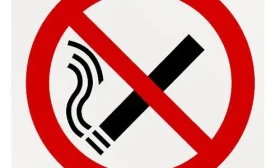The spotlight cuts through the hazy air, illuminating not just the singer on stage, but the swirling, silvery clouds surrounding them. For decades, this was a common scene at concerts, clubs, and bars—an accepted, almost romanticized part of the performance atmosphere. But behind the curtain, this haze was more than just atmospheric; it was a toxic occupational hazard. While many of us are aware of the dangers of secondhand smoke in homes or offices, the significant and sustained harm inflicted upon concert performers has often been overlooked, a silent crisis playing out under the stage lights.
Imagine the working environment of a musician, singer, or even a stagehand before widespread smoking bans. Night after night, show after show, they were immersed in a confined space filled with tobacco smoke. Unlike a casual visitor who might spend an hour or two in a smoky venue, performers are exposed for the duration of their sets, often for multiple hours. Furthermore, the physical demands of their job—singing, playing a wind instrument, moving heavy equipment—force them to take deep, rapid breaths, inhaling the polluted air more deeply into their lungs. This isn't passive exposure; it's an active, occupational inhalation.
The most immediate and professionally devastating impact is on the vocal cords and respiratory system. The human voice is a delicate instrument, reliant on healthy, moisturized mucosal tissue lining the vocal folds. Tobacco smoke is a potent irritant, a combination of thousands of chemicals, many of which are known carcinogens. It has a drying effect, stripping away the necessary moisture and causing inflammation and swelling. For a singer, this can mean a loss of vocal range, a husky or hoarse tone, and a significantly increased vulnerability to vocal fatigue and injury. The tiny, hair-like structures called cilia that line the airways, whose job is to sweep mucus and debris out of the lungs, become paralyzed by the toxins in smoke. This impairs the body's natural cleansing mechanism, leaving performers more susceptible to bronchitis, laryngitis, and persistent respiratory infections. A simple cold can become a career-threatening event when the primary tool for your livelihood is compromised.

Beyond the voice, the cardiovascular strain is immense. Carbon monoxide, a poisonous gas found in high concentrations in secondhand smoke, binds to hemoglobin in red blood cells more readily than oxygen. This reduces the amount of oxygen circulating through the body. For a performer engaged in a high-energy rock show or a physically demanding dance routine, this oxygen deprivation can lead to premature fatigue, dizziness, and a decreased ability to perform at their peak. Their hearts have to work harder to pump what little oxygen is available, putting undue stress on the entire cardiovascular system over the long term.
The long-term health consequences are perhaps the most frightening. Chronic exposure to secondhand smoke is a well-established risk factor for numerous life-threatening conditions. Performers who spent their careers in smoky environments face a significantly elevated risk of developing lung cancer, even if they never smoked a cigarette themselves. The risk of other cancers, such as those of the sinuses, throat, and breast, is also increased. Furthermore, the damage to the lungs can manifest as chronic obstructive pulmonary disease (COPD), a progressive and debilitating condition that causes increasing breathlessness. For a wind instrumentalist, the loss of lung capacity and control is a direct assault on their art.
The psychological and professional toll cannot be understated. The constant anxiety about vocal health, the frustration of cancelled rehearsals or performances due to smoke-induced illness, and the feeling of powerlessness—being unable to control the air you breathe while you work—creates a significant mental burden. Many renowned artists have spoken out about this hidden struggle, describing how they would have to choose between their health and their paycheck, often feeling they had no choice but to endure the hazardous conditions.
The landscape began to change with the advent of indoor smoking bans in public places across many parts of the world. The difference for performers was immediate and profound. Almost overnight, the work environment became safer. Singers reported clearer voices, longer-lasting stamina, and fewer bouts of illness. The air backstage and on stage was no longer a toxic fog but breathable air. This public health policy, perhaps unintentionally, became one of the most significant forms of occupational safety legislation for performers in modern history.
However, the battle is not entirely over. In regions without comprehensive smoking bans, or in certain types of outdoor venues where smoking is permitted, performers still face this risk. The legacy of past exposure also lingers; many veteran performers now live with chronic health conditions rooted in those years of breathing secondhand smoke on the job.
So, what can be done to fully protect these artists? The most critical step is the continued advocacy for and implementation of 100% smoke-free policies in all indoor entertainment venues and designated outdoor performance areas. Venue owners and promoters have a responsibility to provide a safe working environment, and this includes air quality. For performers, being informed and assertive is key. Understanding the very real dangers empowers them to negotiate for smoke-free clauses in their contracts and to refuse gigs in venues that do not prioritize their health.
Supporting broader public health initiatives that aim to reduce smoking prevalence also indirectly protects performers. A societal shift away from smoking creates a cultural expectation of smoke-free entertainment, making it the norm rather than the exception. Additionally, performers can take personal protective measures, such as ensuring proper hydration and vocal rest, and seeking regular medical check-ups to monitor their respiratory and vocal health.
The health effects of secondhand smoke exposure for performers are a stark reminder that art does not exist in a vacuum. The well-being of the artist is intrinsically linked to the quality and sustainability of their art. Protecting performers from this invisible hazard is not just a matter of health and safety; it is an act of preserving culture itself. By ensuring the air on stage is as clear as the notes they sing or play, we honor their craft and guarantee that the music can continue, healthily and powerfully, for years to come. The show must go on, but not at the cost of the performer's life.












